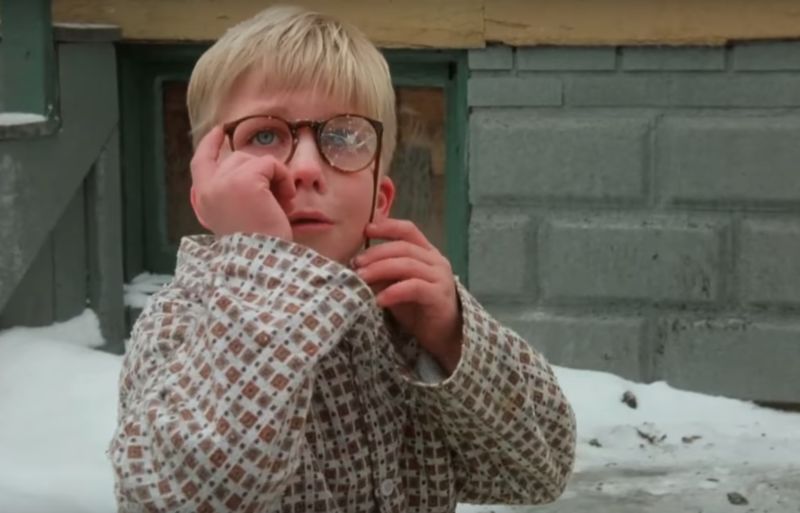
A Christmas Story isn’t just a beloved holiday classic. It’s also a public service announcement about the dangers of BB guns—which, according to new data, is sorely needed.
The number and rate of eye injuries from BB guns and other “nonpowder firearms” are on the rise in kids and teens, according to a new study in the journal Pediatrics. The eye-popping trend is occurring despite the fact that the number and rate of other types of injuries from nonpowder firearms have fallen dramatically in the past 26 years.
The authors of the study—a team of pediatric injury researchers in Ohio—attribute the ocular offenses to a dismal uptake of protective eyewear. Previous research estimated that, among kids with eye-injures from nonpowder firearms, more than 98% were not wearing eye protection at the time of their injuries.
For those readers who don’t obsessively watch the 1983 holiday classic each year: the findings are echoed in A Christmas Story. At the end of the film, main character Ralphie (played by then-12-year-old Peter Billingsley) nearly shoots his eye out in his backyard on Christmas morning when the inaugural shot from his gifted BB gun ricochets. The BB grazes his right cheek and knocks off his glasses, which may have prevented a more serious injury. The crushing scene follows repeated warnings—and imagined taunts—from his parents, teacher, and even a department-store Santa Claus, who told him throughout the film that if he got his much-coveted Red Ryder BB gun for Christmas, he would shoot his eye out.
For the new study into this not-so-fictional scenario, the team in Ohio loaded up data from a national injury monitoring system, which collects information on emergency-room visits from a sampling of hospitals across the country.
Between 1990 and 2016, the data suggests there were 364,133 children (less than 18 years old) injured by nonpowder firearms, which include BB, paintball, airsoft, and pellet guns.
BB guns accounted for 80.8% of all the injuries. The injuries were mostly from unintentional accidents among young boys at their homes. The average age of the injured was 11.8 years old, 99% were unintentionally injured, 87% were boys, and nearly 90% of the injuries happened at home—in other words, the Ralphie scenario.
Eyes buck
In the 26-year time frame, injuries overall declined by a whopping 47.8%. There were 16,456 injuries in 1990, which fell to 8,585 injuries in 2016. But, eye injuries bucked this trend. The number of eye injuries increased by nearly 50% to as high as 4,000 in one year. And the rate of injuries (injuries per 100,000 children) increased by a little over 30%.
The eye injuries were often serious, with 22% requiring hospital admission. The most common injuries included scratches to the surface of the eye (35%), blood pooling inside the eye (hyphema) (12.5%), having a foreign body in the eye (11%), and a complete rupture of the eyeball (10%).
The researchers call for more efforts to ensure that young users of nonpowder firearms have protective eyewear and adult supervision.
Their study does have some limitations, of course, including that it only looked at data from emergency rooms, not doctors’ offices. Thus, it may miss some injury cases. It also doesn’t include data on injuries from “icicles.”
Pediatrics, 2019. DOI: 10.1542/peds.2019-2739 (About DOIs).









